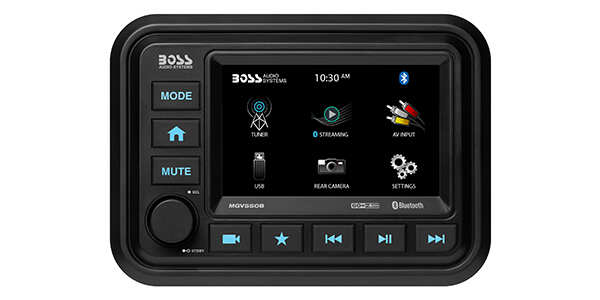Have you ever wondered what does A/V stand for in an event setting? The world of event planning is filled with various acronyms and terms, and A/V is one of the most crucial ones. A/V stands for audio/visual, which encompasses everything related to sound, lighting, video, and technology elements essential for the success of any event. Whether you are organizing a corporate conference, a wedding, a concert, or a trade show, understanding the significance of A/V is paramount. In this ultimate guide, we will delve into the intricacies of A/V in event settings, explore its importance, and provide insights on how to leverage audio/visual elements to create unforgettable event experiences. Let’s unravel the mysteries behind A/V in event planning!
Introduction to A/V in Event Settings
Audio/Visual (A/V) in event settings refers to the equipment, technologies, and services used to enhance and facilitate communication, presentation, and entertainment during events. In today’s digital age, A/V plays a crucial role in creating engaging and immersive experiences for event attendees.
The Role of A/V in Events
A/V equipment such as sound systems, projectors, screens, lighting, and microphones are indispensable tools for ensuring clear communication and delivering impactful presentations at events. High-quality A/V solutions help in capturing the audience’s attention and conveying messages effectively.
Moreover, lighting design and visual effects can set the mood and create a memorable ambiance, enhancing the overall experience for event participants.
Recent Trends in A/V Technology
With advancements in technology, the A/V industry is constantly evolving. In recent years, trends such as live streaming and interactive displays have gained popularity in event settings. These innovations enable organizers to reach a wider audience and increase engagement levels.
- Integration of virtual reality (VR) and augmented reality (AR) technologies
- Utilization of LED walls for dynamic visual content

Understanding the Meaning of A/V
When it comes to organizing events, understanding the meaning of A/V is crucial. A/V stands for audio/visual, encompassing all the technology and equipment related to sound and visual elements in an event setting.
The Significance of A/V in Events
A/V plays a vital role in enhancing the overall experience of attendees. With the right audio and visual setup, event organizers can create immersive environments that captivate and engage the audience.
Proper audiovisual elements can also convey the event’s messaging effectively, leaving a lasting impact on participants.
Evolution of A/V Technology
Over the years, A/V technology has advanced significantly, offering high-definition visuals, crystal-clear sound systems, and interactive display options.
- Projection Mapping: A cutting-edge technology that transforms ordinary surfaces into dynamic displays.
- LED Walls: Providing vibrant and customizable visual backdrops for events.
- Wireless Audio Systems: Enhancing mobility and flexibility in sound setup.
The Importance of A/V in Events
Audio/Visual (A/V) elements play a crucial role in enhancing the overall experience of events. In the dynamic event landscape, where engagement and interaction are paramount, incorporating high-quality A/V components can make a significant difference.
Enhanced Engagement
With visually appealing presentations, impactful videos, and clear audio, A/V technology captivates the audience’s attention, leading to increased engagement levels.
Utilizing state-of-the-art A/V equipment ensures that your message is effectively communicated and resonates with the attendees.
Immersion and Impact
Immersive experiences created through A/V setups can leave a lasting impression on event participants. High-quality sound systems, vibrant displays, and innovative lighting can transform an ordinary event into an extraordinary one.
- Interactive A/V installations
- Virtual reality experiences
- Immersive projection mapping
A/V Equipment and Technology
When it comes to organizing events, having the right Audio/Visual (A/V) equipment and technology is crucial for a successful experience. From sound systems to projectors, A/V equipment plays a significant role in delivering impactful presentations and engaging the audience.
The importance of A/V Equipment
Utilizing high-quality A/V equipment can enhance the overall event experience for attendees. Clear sound systems and sharp visuals can captivate the audience, ensuring that your message is effectively communicated.
Investing in cutting-edge A/V technology can set your event apart from the rest, leaving a lasting impression on participants. State-of-the-art equipment ensures seamless execution and professionalism.
Types of A/V Equipment
From microphones and speakers to video screens and lighting rigs, the range of A/V equipment available is vast and diverse. Each piece serves a specific purpose in delivering a polished and engaging event.
- Wireless Microphones
- Projectors
- LED Screens
- Audio Mixers
A/V Services for Events
In the realm of event management, A/V services refer to audio and visual equipment and solutions integral to the success of any event, be it a conference, seminar, or concert.
The Role of A/V Services in Events
A/V services are essential for ensuring clear communication between speakers and attendees, projecting presentations, and creating an immersive experience with lighting, sound, and visuals.
Having top-notch A/V services can elevate the overall quality of an event, leaving a lasting impression on attendees.
Types of A/V Equipment Used
Common A/V equipment includes projectors, screens, microphones, speakers, sound systems, lighting fixtures, and control systems to manage the flow and quality of audio and visuals.
Event planners work closely with A/V technicians to customize setups based on the event’s specific requirements and the venue’s acoustics and layout.
Best Practices for A/V in Event Settings
When setting up audio-visual (A/V) components for an event, it is crucial to follow the best practices to ensure a seamless and successful experience for both the organizers and participants. Here are some key practices to consider:
1. Quality Equipment Selection
Invest in high-quality A/V equipment that is suitable for the size and requirements of the event. Ensure that microphones, speakers, projectors, and video screens are of top-notch quality to avoid technical glitches.
2. Sound Check and Lighting
Prior to the event, conduct thorough sound checks to adjust the volume levels, test microphones, and eliminate any unwanted noise. Additionally, pay attention to lighting arrangements to create the right ambiance and ensure clear visibility for attendees.
3. Backup Systems
Always have backup A/V systems in place to handle any unforeseen technical issues. This includes having spare microphones, cables, and batteries readily available to quickly replace any faulty equipment.
4. Skilled Technical Support
Employ experienced A/V technicians who can efficiently set up, operate, and troubleshoot any A/V problems during the event. Their expertise will help in maintaining a smooth flow of presentations and performances.
5. Audience Engagement
Utilize interactive A/V elements such as audience response systems, live polling, and social media integration to engage attendees and make the event more interactive and dynamic.
Tips for Choosing the Right A/V Provider
When it comes to selecting the ideal audio/visual (A/V) provider for your event, several factors need consideration to ensure a seamless experience. Here are some valuable tips to aid you in making the right choice:
Assess Your Event Needs
Prioritize understanding the specific requirements of your event to determine the type and extent of A/V services needed. Consider factors like venue size, audience size, and technical requirements.
Knowing your needs clearly will help you communicate effectively with potential providers.
Check Provider Experience and Reputation
Look for A/V providers with a proven track record in handling events similar to yours. Research customer reviews, testimonials, and case studies to gauge their reliability and expertise.
Experience in handling events of various scales and complexities is crucial.
Ensure Technical Capabilities
Verify that the A/V provider has up-to-date equipment and technical expertise to meet your event’s requirements. Inquire about the range of services they offer, from sound systems to video presentations.
- Ensure the provider can handle live streaming or recording if necessary.
- Check for flexibility in adapting to venue limitations.
Frequently Asked Questions
-
- What does A/V stand for?
- A/V stands for audio/visual in an event setting. It encompasses all equipment and technologies related to sound and visual aspects of an event.
-
- Why is A/V important in an event setting?
- A/V is crucial in events as it enhances audience engagement, communication, and overall experience. It helps convey messages effectively through sound, visuals, and various technologies.
-
- What are some common A/V equipment used in events?
- Common A/V equipment used in events include microphones, speakers, projectors, screens, stage lighting, video cameras, and sound systems, among others.
-
- How can A/V setup impact an event?
- The A/V setup can greatly impact an event by influencing the quality of sound, visuals, and overall production value. A well-planned A/V setup can elevate the event experience for both organizers and attendees.
-
- What should event organizers consider when planning A/V for an event?
- Event organizers should consider factors such as venue size, audience size, type of event, budget, technical requirements, and desired outcomes when planning A/V for an event. It is essential to work closely with A/V professionals to ensure a successful setup.
Final Thoughts: Decoding A/V in Event Settings
As we conclude our ultimate guide on what A/V stands for in an event setting, it’s clear that audio/visual technology plays a pivotal role in enhancing the overall event experience. A/V encompasses the crucial components of sound, lighting, visuals, and more, working together seamlessly to create memorable and engaging events.
Understanding the importance of A/V terminology and equipment can empower event planners, organizers, and attendees to make informed decisions that elevate the impact of any event. By harnessing the power of audio/visual elements effectively, one can create immersive experiences that leave a lasting impression on guests.
Remember, the next time you attend an event, pay attention to the A/V setup; you’ll have a newfound appreciation for the technology behind the scenes!

